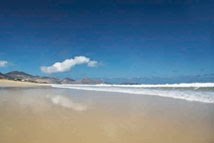 Oeiras is a civil parish and a municipality in western Lisbon Metropolitan Area, Portugal. It is in conurbation with Lisbon, the parish population is 34,850, and the entire Oeiras municipality has 168,475 inhabitants. The town (vila) of Oeiras is one of the most populous towns in Portugal. It is located by the end of the Tagus river (rio Tejo) mouth, across from Almada, in the Greater Lisbon subregion.
Oeiras is a civil parish and a municipality in western Lisbon Metropolitan Area, Portugal. It is in conurbation with Lisbon, the parish population is 34,850, and the entire Oeiras municipality has 168,475 inhabitants. The town (vila) of Oeiras is one of the most populous towns in Portugal. It is located by the end of the Tagus river (rio Tejo) mouth, across from Almada, in the Greater Lisbon subregion.The parish dates back to the year 1208, when the area was settled by Christians from the north of Portugal. The municipality was founded in 1759 by the Marquis of Pombal, as a reward granted by king José I to his minister for having reconstructed downtown Lisbon after the 1755 Lisbon earthquake, it was at the county that he built a magnificent manor-house, the Palace of the Counts of Oeiras, which still exhibits grand stone staircases, statues, splendid tiles and beautiful gardens with cascades and an aqueduct with arches. Oeiras was once part of a defensive line of maritime fortresses built along the Lisbon coast between the 16th and 17th centuries, including the Saint Lawrence Fort (known as Bugio, rising on a tiny islet in the middle of the River Tagus) and the São Julião da Barra Fort, both examples of the Renaissance military architecture.
Oeiras offers a range of new attractions and sites of interest, from the Fábrica da Pólvora (a former gunpowder factory from the 16th century which has been recovered for leisure and cultural purposes) to the Poets Park (a vast green space with statues of Portuguese poets and writers) and the Palace of the Royal Estate at Caxias, dating from the 18th century and surrounded by wonderful gardens.
Visitors may also benefit from different leisure and sports facilities, such as the sports complex of Jamor, the Maritime Walk (a seaside promenade to link Algés to the Torre beach, still unfinished) or the modern marina at Oeiras, prepared to welcome sixty ships, besides other parks and gardens.



